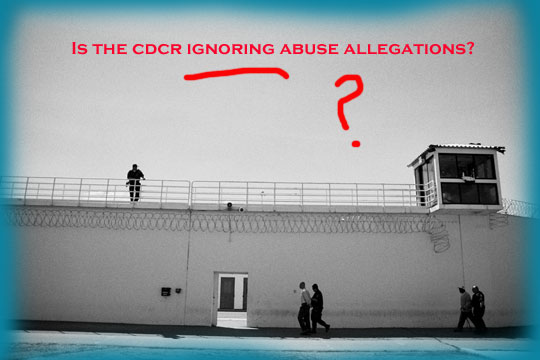The degree of civilization in a society can be judged by entering its prisons.
– Fyodor Dostoevsky
Last spring, in an excellent multi-part series, reporter Charles Piller of the Sacramento Bee, exposed evidence of abuse, racism and cruelty by guards at High Desert State Prison in Susanville. Piller’s investigative work also described an apparent cover-up of abuse allegations by corrections officials. In addition, he found strong evidence throughout the prison system of widespread suppression of inmates’ rights to contest allegations by guards or pursue claims of mistreatment.
(Here and here and here are links to Pillers earlier articles.)
The series was powerful enough and well-sourced enough, that it persuaded California state senate leaders to launch a 7 month probe of their own into how the CDCR treated allegations of misconduct.
That report was released on December 1 in the form of a letter addressed to CDCR director, Matthew Cate.
The senators investigation found that officials from the Department of Corrections and Rehabilitation and from the Office of the Inspector General repeatedly failed to investigate and address claims of staff misconduct from multiple sources, even when those sources were corrections department researchers.
Here are some clips from Piller’s story on the senate report:
For example, the corrections Office of Internal Affairs received a complaint from Sacramento resident Brandy Frye in June 2007, accompanied by supporting letters from High Desert inmates. Frye alleged that guards pepper-sprayed and shackled inmates who failed to finish their meals within two minutes. She described inmate meals tainted with bird droppings, strip searches in the snow and other actions she regarded as dehumanizing.
High Desert officials promised to investigate and correct any staff misconduct discovered. Corrections executives later told legislators that guards had behaved properly. But the Senate inquiry found no such investigation had taken place.
“Legislators don’t like being misinformed in such a fashion,” Leno said in an interview. “These are the issues of greatest concern, and they didn’t even seem to have it on their radar.”
And there is this:
“….Several inmates described an incident when staff left one inmate on the floor with rectal bleeding and refused to take him to get medical attention,” according to the state researchers’ report. When guards arrived, according to inmate claims, they dismissed the prisoner with a racial epithet and said, ” ‘let him die.’ And they left him there.” The researchers reported the claims up the chain of command.
Steinberg and Leno said the researchers’ efforts to report the allegations were “frustrated by some department supervisors, and apparently not pursued by other department management staff.”
Behavior unit inmates at High Desert and elsewhere also said officers ignored written complaints.
With a lousy economy, and a host of other problems to concern ourselves with, it is difficult for most Californians to think too much about the lives and rights of prisoners.
But as the Bee said in an earlier editorial, we ignore the trampling of prisoners’ rights at our own peril.
It’s not easy to be sympathetic to the plight of California’s prison inmates; many did horrible things to their victims and need to be locked up.
But in the long run, it does not protect the public to look the other way when prisoners are treated inhumanely; soon enough, most of them will be back in our neighborhoods and on our streets.
The kind of abuse documented in a Bee investigation will mean that the people walking out of prisons will be more damaged, almost certainly more prone to violence and assuredly less able to succeed, or just survive, on the outside….
Photo of High Desert State Prison, Susanville, by Ben Kutchins
(For additional High Desert State Prison photos by Ben Kuthins go here.)


[…] WitnessLA.com » Blog Archive » Probe Says Prison Guard Misconduct … […]